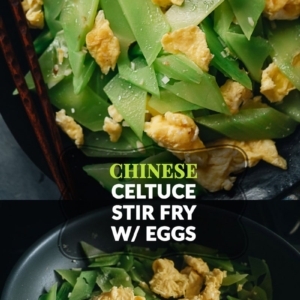Delicate and delicious celtuce stir fry with eggs is an authentic Chinese homestyle dish that gives you a unique balance of texture and taste that you won’t want to miss! {Gluten-Free, Vegetarian}
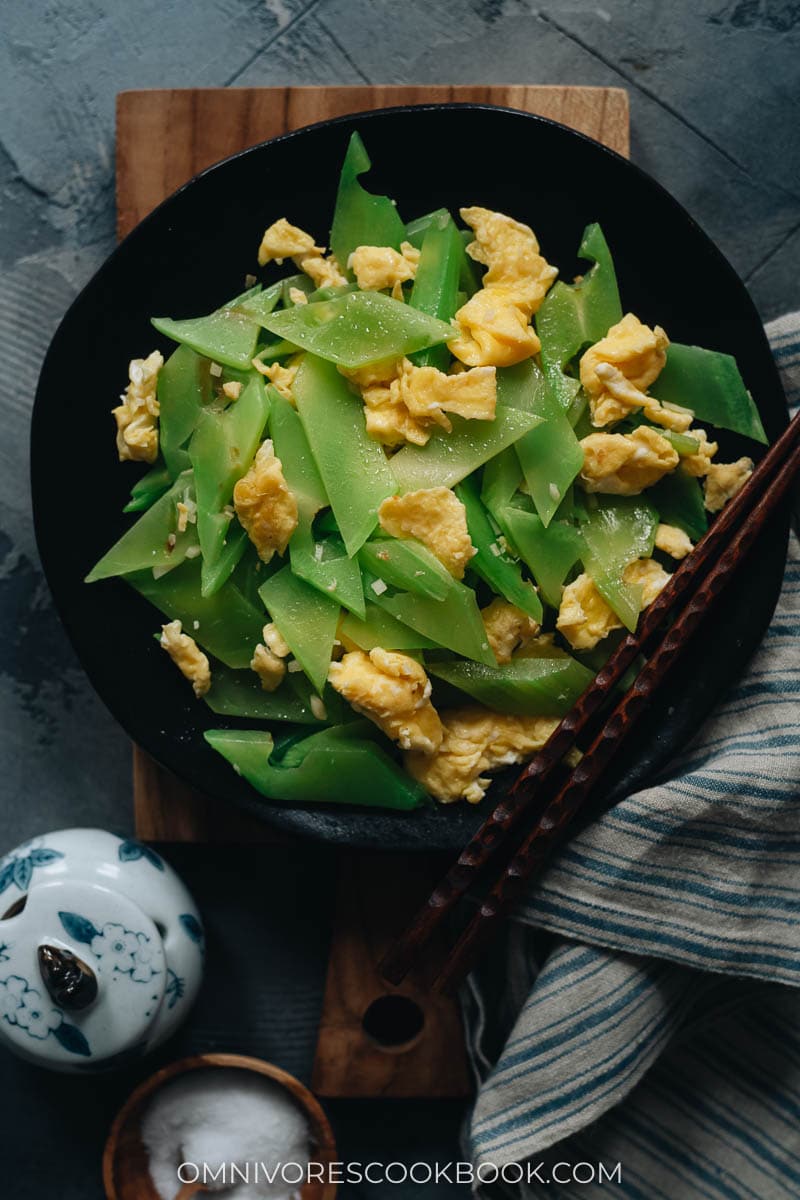
I know some of you are looking at the word ‘celtuce’ and wondering if I’ve made a typo. Rest assured, celtuce is a real vegetable. It’s also called stem lettuce, asparagus lettuce, or Chinese lettuce. Call it what you want, this interesting vegetable was always a part of our meals when it was in season.
My mom would make this homestyle celtuce stir fry for me and it always brings me happy memories when I cook it now. The aroma takes me back to being a kid again, reminding me of spring and late summer when it is in season.
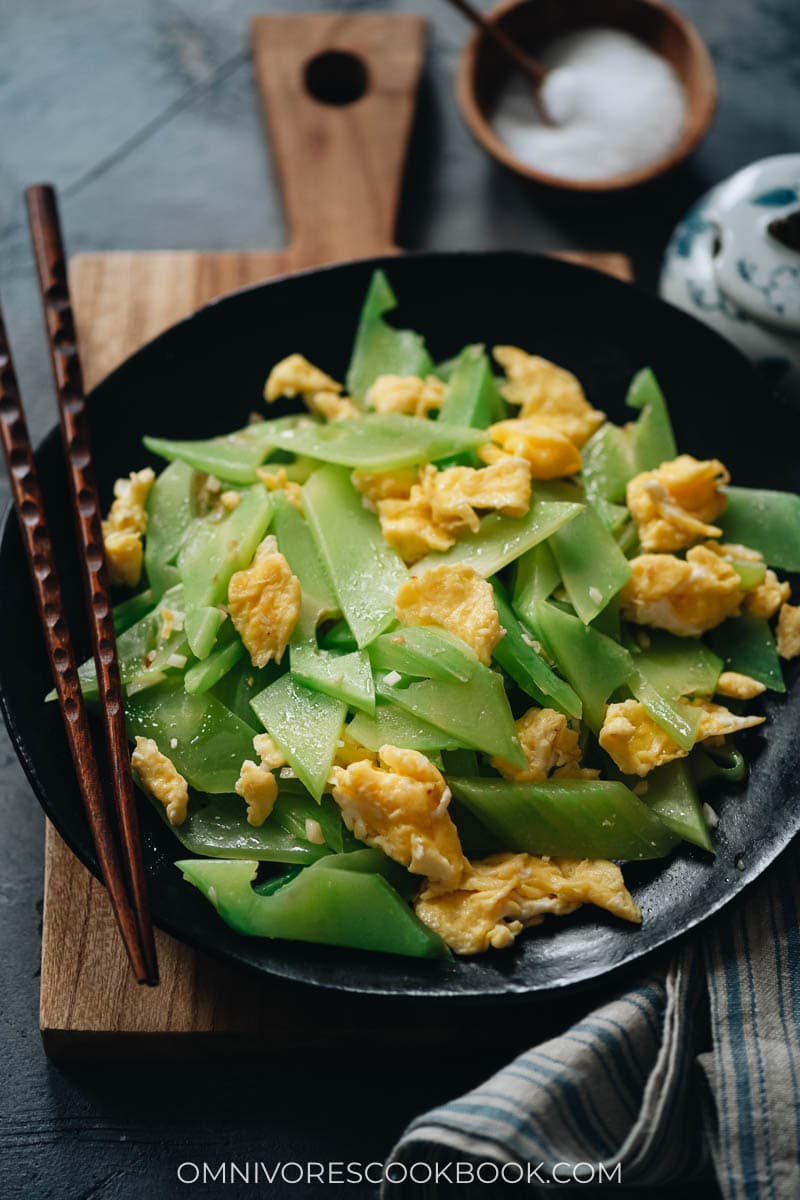
What is celtuce
Celtuce is a very popular vegetable in China. The leaves of celtuce are really tender and a lot like bibb lettuce. It has a crispy stem and is moist and mildly flavored. I’d say it is most like a cross between cucumber, asparagus, and bamboo shoots. Both the stem and the leaves are edible and are fantastic eaten raw. And you can also cook with both parts in stir fries and soups. There are so many ways to use this special vegetable!
How to buy celtuce
Celtuce stem & young celtuce
You will usually find them in an Asian market. Although I’ve also seen them at farmers’ markets when in season.
Celtuce can look very different depending on when it is harvested.
You can see in the pictures below. The celtuce stem on the right is the type you’ll usually see in Asian markets (also the type we’re familiar with in China). The stems are long, about 10” (30 cm), and thick. Sometimes they come with the leaves attached. More often than not, the leaves are sold separately either as celtuce leaves, or You Mai Cai (油麦菜). Celtuce stems are more suitable for stir fries, like in this recipe.
At the farmer’s market, I saw some very young celtuce that was just gorgeous (picture on the right). The stem is short and thin, with narrower, tenderer leaves. These usually come in small batches.
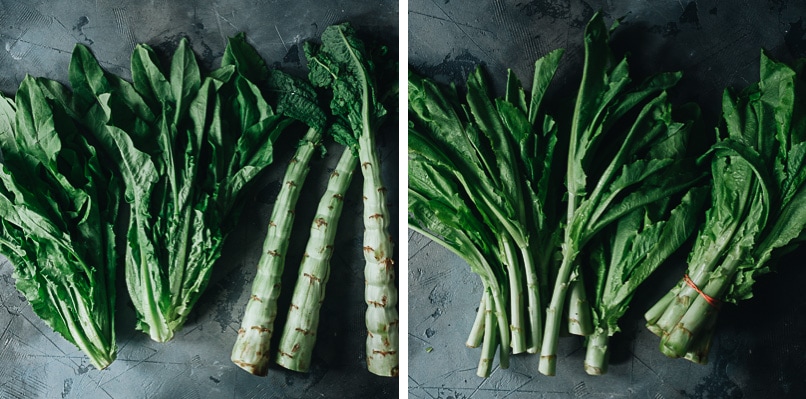
How to pick celtuce stems
When you shop for celtuce, be careful when purchasing the ones with the long and thick stems. The cut side of the stem should be pale green (not yellowish green), with fewer white strands. These white strands pointing to the center have a tough, stringy texture. Moreover, when celtuce grows too big before it’s harvested, the stem will become hollow and tough, with a brownish clay-like substance attached to it. These stems are not suitable for cooking.
Young celtuce has no such issues.

(When I bought the three celtuce stems at the Asian market, unfortunately two of them were not usable. But at least I got pictures to show you what to watch out for!)
How to prep and cut celtuce
It depends on the type of celtuce.
For celtuce stems
- You need to use a knife to peel off the tough skin from the stem. I usually use one hand to hold the stem, standing it on a cutting board, and use my other hand to peel off the skin using my santoku knife. You want to remove the layer that has these white strands, but it’s OK if the core has a little bit of the strands still attached.
- Tilt your knife to cut the stem into chunks that are about 1” (2.5 cm) wide.
- Flip the chunks so that they’re cut side down, then slice them into thin rhombus-shaped pieces.
This is the method my mom taught me. It helps ensure all the slices are similar sized and will be cooked evenly.
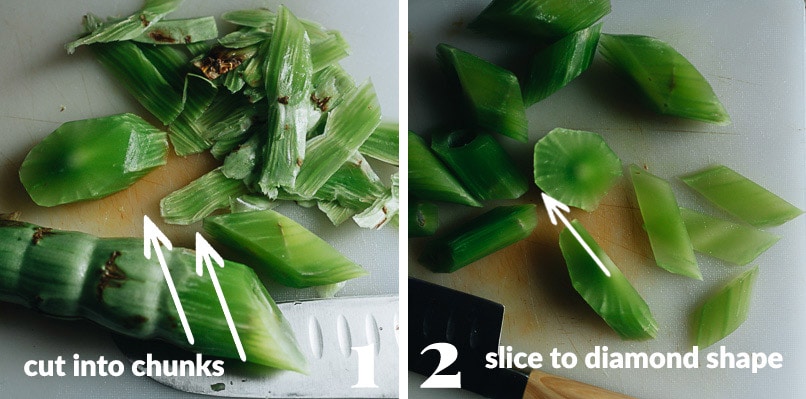
For young celtuce
The skin will be very thin (similar to asparagus) and you might not need to remove it. You can slice off a piece of celtuce and taste it. If the skin is too fibrous for you, you can remove it with a peeler.
Young celtuce has very thin and short stems. You can simply slice them into round pieces like you’re slicing a carrot.
How to cook with celtuce
Celtuce (both the stem and the leaves) are edible and delicious when eaten raw or cooked. For the stem, when it’s cooked, it becomes tender and has a lightly sweet taste. For the leaves, it will have a hint of bitterness to it when it’s cooked. It also requires much less cooking time. That’s why you should usually use them in different dishes, or at least add them at different stages when using both parts in the same dish.
How to cook with celtuce stems
When you cook with the stem, you don’t need to season it much. Honestly, it’s delicious by itself and has a very delicate texture. It’s important that if you’re cooking it, you should do so briefly so it stays crisp. I recommend tasting it raw before you cook it for the first time, then taste it during cooking, so you can stop cooking when it reaches the desired texture.

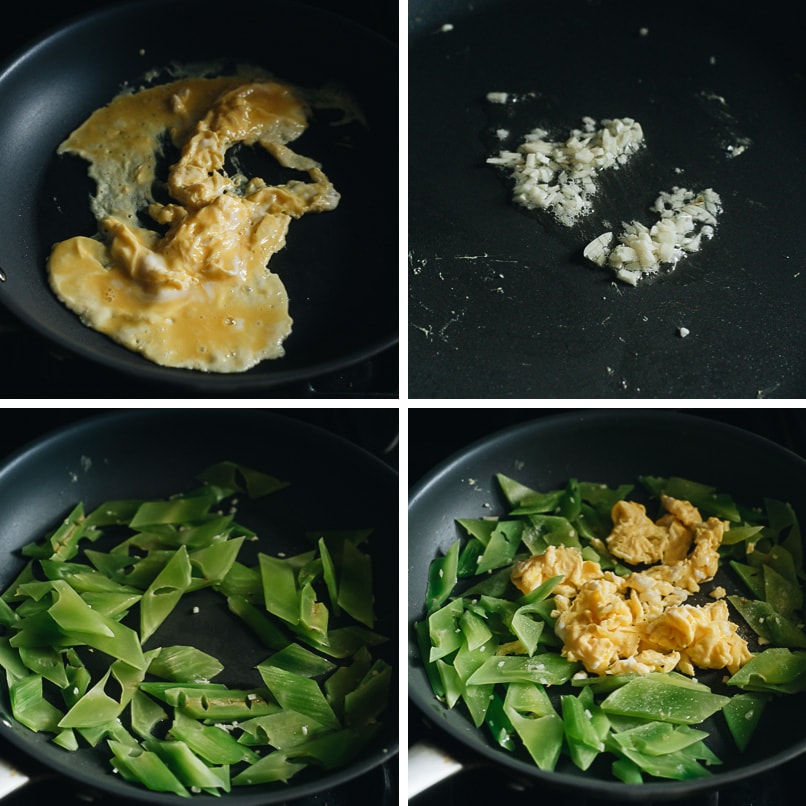
If you overcook celtuce, it will become very soft and eventually fall apart.
Other uses for celtuce leaves
- Use celtuce stems in soup. It takes 2 minutes to cook the sliced stem. I use it in miso soup and egg drop soup. It’s also a great ingredient in hot pot.
- Use celtuce leaves in salad. You can refer to my celtuce leaves salad with sesame sauce, a classic Chinese dish. You can also tear it and use it to replace lettuce leaves in your salad.
- Use celtuce leaves in stir fry. Simply cook them in olive oil with a clove of minced garlic (or some chopped peppers) and pinch of salt until they turn tender. It’s delightful.
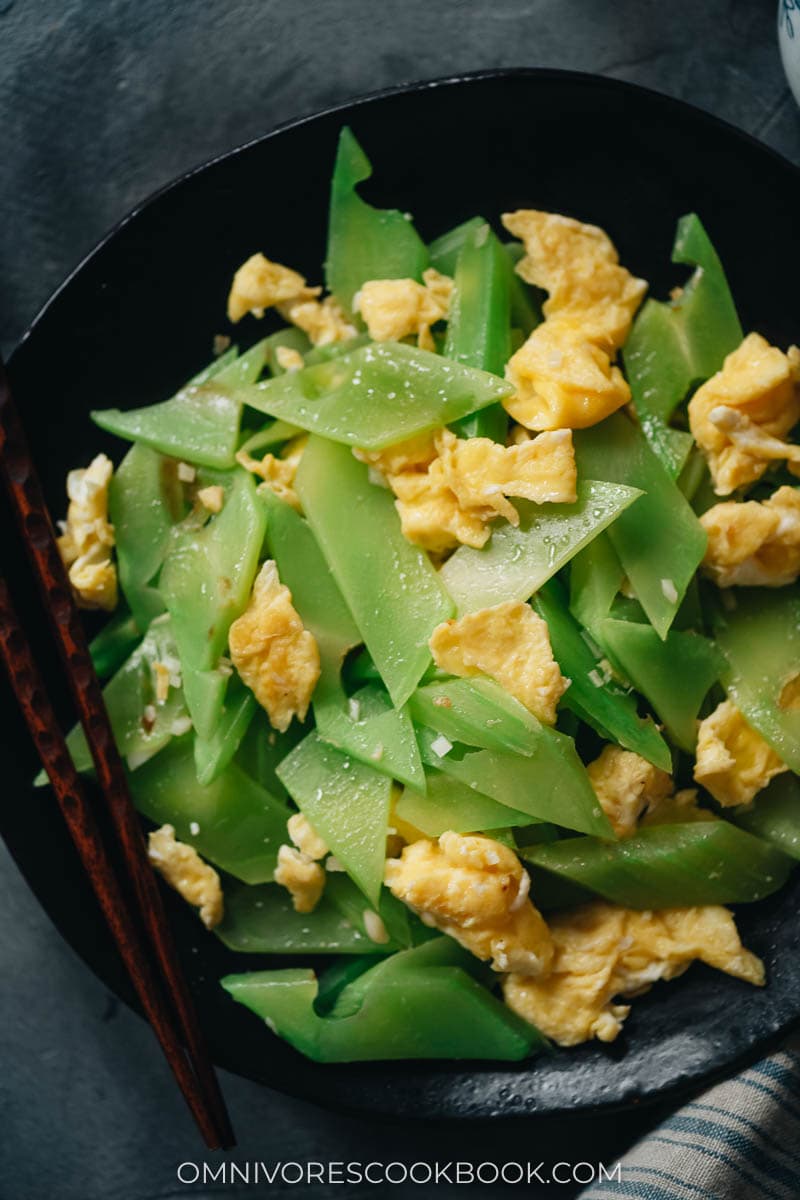
Now that we are approaching spring and summer, you should be able to find celtuce. The next time you stock up on fresh veggies at your local farmer’s market, ask if they have some and buy it. You can also go to any Asian market and grab celtuce almost all year around. Just ask for it and they’ll be happy to grab one for you!
Want to learn more about Chinese Cooking? Sign up my newsletter to receive the 5-Day Chinese Cooking Crash Course and recipe update!
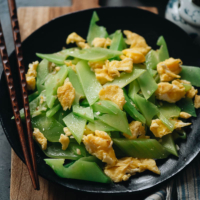
Celtuce Stir Fry with Eggs (莴笋炒鸡蛋)
Ingredients
- 1 tablespoon peanut oil
- 2 eggs , beaten
- 1 celtuce stem , sliced
- 1 clove garlic , minced
- 1/4 teaspoon salt , or to taste
Instructions
- Add 1/2 tablespoon oil in a large nonstick pan and heat over medium-high heat. When the pan is hot, add the beaten eggs and a pinch of salt. Cook until the bottom is set, then scramble the eggs with a spatula until the eggs are broken into smaller pieces and just cooked through. Transfer the eggs to a plate.
- Add the remaining 1/2 tablespoon of oil and the garlic. Stir a few times to release the fragrance.
- Add the celtuce. Cook and stir until the celtuce just starts to soften, 2 minutes or so.
- Add back the cooked eggs and sprinkle evenly with 1/4 teaspoon salt. Stir to mix everything well. Turn to medium-low heat and taste the celtuce. Adjust the seasoning by adding more salt, if needed. Once done, immediately transfer everything to a serving plate.
- Serve hot as a side dish.
Nutrition
If you give this recipe a try, let us know! Leave a comment, rate it (once you’ve tried it), and take a picture and tag it @omnivorescookbook on Instagram! I’d love to see what you come up with.













